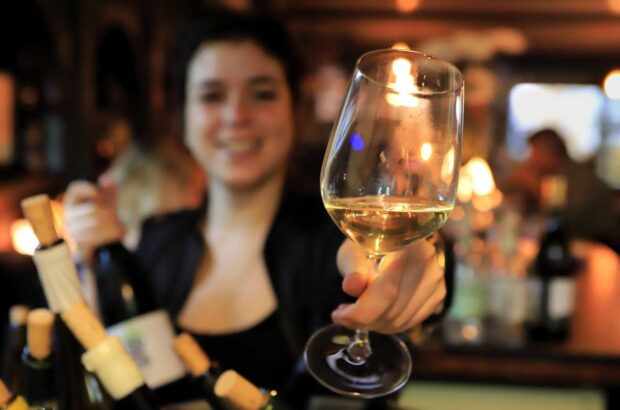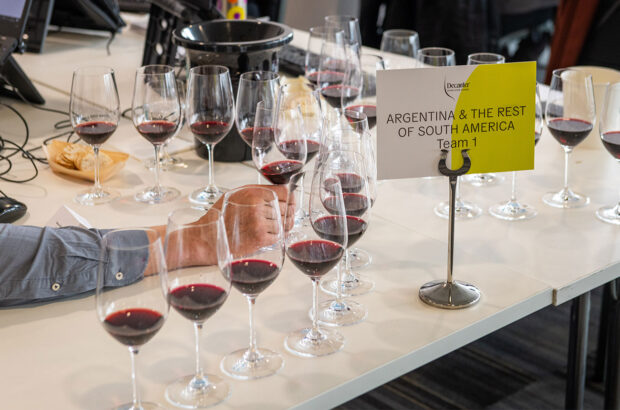Barossa reds elegant? European? Tyson Stelzer finds a focus on old vines and sub-regions is providing a counterpoint to the blockbusters that first put Australia’s most famed wine region on the map
The Barossa Valley is synonymous with the stereotypical Aussie red: big, ripe, high octane and finished off with lashings of US oak. Or is it? The winds of change are blowing through Australia’s most famous region, and the buzzwords of ‘intensity’, ‘alcohol’ and ‘wood’ have been replaced with ‘old vines’, ‘sub-regionality’ and ‘balance’. Is the Barossa becoming more European?
The region has seen the warning signs. ‘We’re in diabolical trouble. Global warming will bring higher alcohols in our wines,’ said Wolf Blass (now brand ambassador for the winery he founded in 1966) at a gathering of Barossa winemakers last year. ‘Robert Parker has to be blamed, and unfortunately we followed by making our wines in this style. I’m warning you, we’re going to get attacked by world health authorities if we don’t stop! Wines over 15% alcohol should not get awarded at any wine show anywhere!’
Sage words which rang hollow when, just a few months later, Blass took to the road to launch the super-premium Wolf Blass range, with not one red wine at less than 15% alcohol and one tipping the scales at 15.5%. Is the Barossa taking its own warning seriously, or is it simply spouting what drinkers would like to hear?
Now, more than ever, consumers expect action. Australia’s dwindling reputation has been blamed on its ‘critter’ wines – entry-level quaffers decorated with all manner of quirky fauna. ‘But it’s not just these, it’s the top-end wines as well,’ says Penfolds’ chief winemaker, Peter Gago. ‘Wealthy Americans bought high-alcohol, 99- and 100-point wines five or eight years ago, and they’re bringing them out of their cellars now to find they’ve fallen over. High alcohols have to come down.’
Taking action
For Gago, this plea is more than just lip service, and he is actively working to lower alcohol levels. It’s a tough game, following three drought seasons and two successive record heatwaves, in which ripeness (and hence potential alcohol) is set to skyrocket. ‘In 2007, we picked Magill Estate Shiraz on 8 February, the earliest in 160 years,’ he says. The record lasted for all of 12 months until it was broken in 2008, and again in 2009. ‘I don’t care what the textbooks say,’ Gago responded when he was criticised for picking so early. ‘We picked early because we make table wine here, not vintage Port!’
With careful attention in the vineyard, it is possible to produce balanced wines even in these tough seasons. ‘If we don’t overcrop, we can get the style of fruit that we’re after without huge alcohols,’ says Michael Twelftree of Two Hands.
This is a trend that makes the Blasses of the Barossa look like exceptions and the Penfolds and Two Hands the rule. Following an extensive tasting of reds from across the region last month, St Hallett’s chief winemaker Stuart Blackwell summed up the sentiments of those present by suggesting the 2008s showed a more considered approach to picking, fermentation and use of oak than previous vintages. ‘There’s more finesse in the wines now than there was a few years ago,’ he said.
This is a recent initiative for some. Saltram winemaker Savaughn Wells says Barossa Shiraz will always be big and bold ‘because that’s what we do best. But if we can finesse them a bit, that’ll be a good thing’. Pulling back on new oak is a key part. Saltram’s top wines are moving to a higher proportion of 2,100-litre French oak; larger barrels that impart less oak flavour and tannin. ‘It comes back to respect of the fruit,’ she says.
For others, the future is not a question of changing old styles but supplementing them with new ones. ‘I was asked from day one, “How are you going to change Grange?”’ says Gago. ‘Well, I’m not changing it. Grange and Bin 707 have to be multi-regional blends with 100% new US oak, by definition.’
In response to consumers moving away from US oak and toward single-region wines, Gago launched Penfolds RWT, a Barossa Shiraz made only in French oak. Along the same lines, Penfolds has in the pipeline an impressive French oak Coonawarra Cabernet and a single sub-region Marananga Barossa Shiraz.
Many Barossa winemakers claim, though, that there is no agenda for dramatic change since they’ve already been pursuing a more refined style. ‘We’ve never tried to make a blockbuster,’ says Andrew Wigan of Peter Lehmann. ‘I don’t want to go the way of some makers who are letting alcohol levels get too high. When I go to Europe, people tell me my wines are not Australian in style but European; they have more finesse.’ Over the past 20 years, Peter Lehmann’s Barossa flagship, Stonewell Shiraz, has slowly moved from 100% US oak to 90% French oak. ‘We’ve tried hard to back off on the ripeness to make a more international style,’ Wigan explained.
Tuning down
Robert O’Callaghan, owner/winemaker of Rockford, says he is also merely trying to maintain his style. ‘In a world where marketing is driven by a new product each year, my philosophy is based on keeping the old model viable,’ he says. ‘The easiest thing to do in the Barossa is get grapes ripe and make big wines. What’s hard is to tune that down, so you’ve got the power without it being too obvious.’ It seems to be working, evidenced by feedback from Europe that his wines are more Old World than New. ‘That’s the nicest compliment I can be paid!’ he says.
The trend toward a more European style in the Barossa is not just about alcohol and oak. It embraces a respect for fruit and recognises the distinctiveness of the Barossa’s sub-regions. The region is a complex tapestry of ‘micro-areas’ which its winegrowers are only starting to understand, according to Yalumba chief winemaker Louisa Rose. She has recently released three single-site Shirazes, labelled according to their Barossa sub-regions of Eden Valley, Light Pass and Lyndoch. ‘It’s fantastic to have three Shirazes from the same vintage made essentially in the same way. It’s a great way to explore the differences and to explain that the Barossa is not just one big blob.’ she says.
Expression of place
The Barossa sub-regionality debate has been hotting up this year, convoluted by the detail of the many communes and parishes making up the complexity of the region. Should sites be distinguished on the basis of soil, microclimate, altitude or town boundaries? The process of settling on an agreed standard has been further delayed by companies who own trademarks to the names of the areas in question. Ebenezer, Koonunga Hill, Kalimna, Stonewell and Bethany have been brand names for some time.
For many Barossa producers, the fascination with exploring sub-regionality has nothing to do with branding. Charles Melton bought 30ha (hectares) of the highest altitude site in High Eden, in the cool part of the hills east of the Barossa, and will raise eyebrows this year when he plants Grenache on such a cool site, traditionally planted to Riesling and Chardonnay. He also has plans for a field block with a mixture of the 13 varieties used in Châteauneuf-du-Pape. Melton expects this cool-climate, dry-grown, low-yielding Grenache won’t stand alone but rather become a crucial blending component with his Barossa Valley floor vineyards. ‘We’ve got 15 different blocks of Grenache throughout the valley and the fruit from each is very different,’ he said. ‘For us, this distinctiveness is one of the exciting things about the Barossa.’
As a region, it seems the Barossa will continue to explore sub-regionality for some time yet. ‘The past 20 years have just been exploratory,’ suggests Melton. ‘We really have a chance to take the knowledge that we’ve gained and use it to take a step forward.’
One front on which the region has found agreement is a standard for classifying its old vines, launched last month under the banner of The Barossa Old Vine Charter. Previously, terminology had been bandied around looely. ‘What does “old vine” mean?’ asked Gago. ‘We need to define the nomenclature. This is a code for classifying the old vines of the region.’
Under the Charter, vines 35 years of age and older can be named Barossa Old Vines. Those over 70 years, Survivor Vines; 100 years, Centurion Vines; 125 years, Ancestor Vines. But don’t expect to see the names on Barossa labels just now. There is considerable work to be done in the meantime, including establishing an authentication process through a register of vines. It’s no easy task hunting for records that extend back to the first Barossa plantings of 1842.
Rutherglen has requested permission from the Barossa to use the Charter, and the Winemakers’ Federation has suggested that it’s something the whole of Australia could consider. ‘We’d like to see some sort of position that establishes old vines in a logical hierarchy around the world,’ says Yalumba’s Brian Walsh.
‘In the perception of serious wine drinkers, the Old World owns the integrity to old vineyards,’ says Yalumba proprietor Robert Hill Smith. ‘To take an Old Vine Charter to the world will cause a lot of people who take Australia for granted to think again. This charter is about integrity; about hoping the wines we put in front of people express place and variety. It’s a necessary evolution that signifies a growing up of Australia.’
The Barossa’s future is about showcasing the distinctiveness of its diverse landscape and established vineyards, and presenting this free from the distractions of high alcohol and dominating oak. Its best producers have been following this philosophy all along, creating wines accessible to European palates. For them, diabolical warnings seem as far removed as the Barossa is from Europe itself.
Tyson Stelzer is a wine writer and author based in Brisbane. His latest book, Taste Food & Wine 2009, co-authored with Matthew Jukes, won Best Food and Wine Writing Award at the 2008 Australian Food Media Awards
Written by Tyson Stelzer






